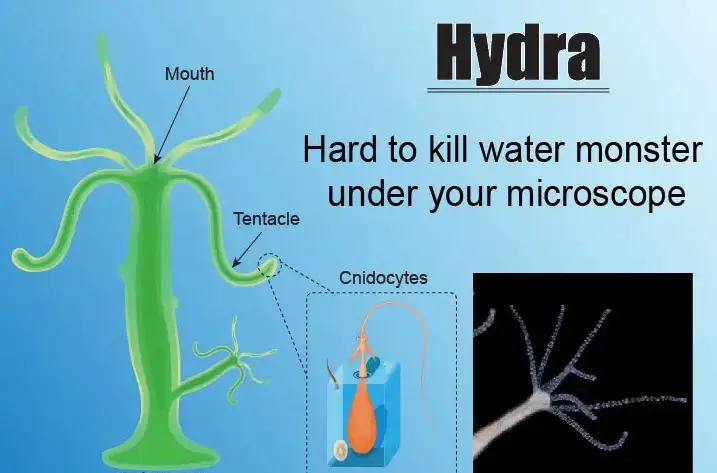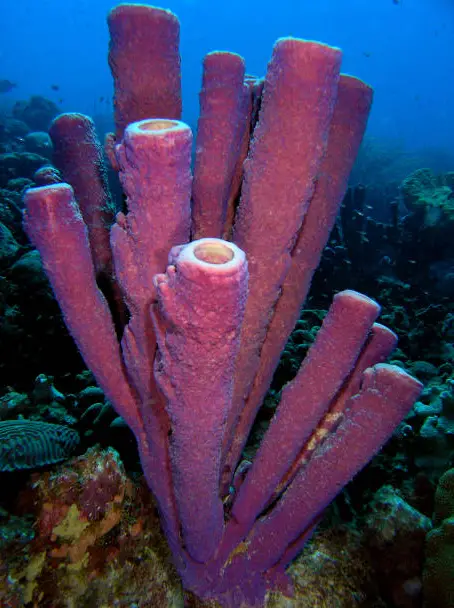Hydra and sponge, two simple yet fascinating creatures, are foundational to both the environment and biological research. These organisms are not just mere subjects of elementary biology but pivotal in the understanding of multicellular life forms. By exploring their basic structures and functions, we can glean insights into more complex life systems. While they share some similarities, such as being predominantly aquatic, their differences are significant and notable.
The primary distinction between Hydra and sponge lies in their physical structure, reproduction methods, and ecological roles. Hydra are small, usually a few millimeters long, and exhibit a simple tubular shape with tentacles that capture prey. In contrast, sponges are porous organisms that filter feed by drawing water into their bodies. Both reproduce in a variety of ways including sexually and asexually but exhibit unique adaptations to their environments.
These organisms play crucial roles in their respective ecosystems. Hydra often contribute to the aquatic food web by controlling populations of smaller organisms, while sponges act as vital filtering systems, cleaning the water and creating habitats within their complex structures. Understanding their differences not only enriches our knowledge of aquatic life forms but also highlights the diversity of adaptations in the animal kingdom.

Basic Characteristics
Defining Hydra
Hydra are small, freshwater organisms belonging to the phylum Cnidaria, which also includes jellyfish and corals. What sets Hydra apart is their incredible regenerative ability, allowing them to rebuild their entire body from just a fragment. Typically, they are a few millimeters long and consist of a tubular body with a mouth opening surrounded by tentacles.
Defining Sponge
Sponges, known scientifically as Porifera, are among the simplest of all animals. Unlike other animals, they lack true tissues and organs and rely on a system of pores and channels allowing water to circulate through them. Sponges are primarily marine animals, although there are also freshwater species. They are sessile, meaning they are attached to a surface and do not move throughout their adult lives.
Physical Structure
Hydra’s Structure
The structure of a Hydra is fairly straightforward. It has a cylindrical body that is radially symmetrical, topped with a mouth that is surrounded by tentacles. The tentacles are equipped with specialized cells called nematocysts, which are used to capture prey and provide defense. The base of the Hydra is a sticky foot, known as the basal disc, which helps it to anchor itself to surfaces in the water.
Sponge’s Anatomy
The anatomy of a sponge is unique and specialized for its filtering lifestyle. Sponges have a porous body made up of two layers of cells separated by a gelatinous substance called mesohyl. Water flows into the sponge through openings called ostia, moves through the mesohyl, and exits through a larger opening called the osculum. This constant flow of water allows sponges to filter feed, trapping nutrients as the water passes through.
Reproduction Methods
How Hydra Reproduce
Hydra can reproduce both sexually and asexually. In asexual reproduction, a process called budding is typically observed:
- A small bud forms on the side of the Hydra’s body.
- This bud develops a mouth and tentacles.
- Once mature, the bud detaches from the parent body to become an independent organism.
During sexual reproduction, which is less common and usually triggered by adverse environmental conditions, male and female reproductive cells are produced. These cells combine to form a zygote, which eventually develops into a new organism.
Sponge Reproduction
Sponges can also reproduce both sexually and asexually. Asexual reproduction often occurs through budding or by producing fragments called gemmules, which can develop into new sponges under favorable conditions. Sexual reproduction involves the production of sperm and eggs. Sponges are hermaphrodites, meaning they produce both sperm and eggs, sometimes even in the same individual. The fertilized egg develops into a free-swimming larva, which eventually settles to form a new sponge.
Habitat Preferences
Hydra Habitats
Hydra are typically found in clean, freshwater environments such as ponds, lakes, and streams. They prefer calm waters where they can attach themselves to vegetation or submerged surfaces. The clarity and cleanliness of the water are crucial as they rely on their nematocysts to capture small aquatic organisms.
Sponge Habitats
Sponges have a wider range of habitats. Most are marine and can be found from the intertidal zone to depths exceeding several thousand meters. They attach themselves to rocks, coral reefs, or the ocean floor. Some species prefer quieter waters, while others can be found in fast-flowing currents, where their constant supply of water helps in their filter-feeding process.

Ecological Roles
Hydra in Ecosystems
Hydra play a pivotal role in freshwater ecosystems despite their small size. These organisms are primarily carnivorous and exert significant control over the population dynamics of smaller aquatic organisms. This control helps maintain the balance within the ecosystem, preventing any single species from dominating and disrupting the ecological equilibrium.
- Predation: Hydra consume small aquatic invertebrates and protozoa, regulating their populations.
- Bioindicators: Their presence and health can indicate the quality of the water, as Hydra are sensitive to pollutants and changes in the aquatic environment.
Sponge’s Ecological Impact
Sponges are essential to marine ecosystems, contributing in several ways that underscore their ecological importance. These organisms not only act as biofilters but also serve as habitat builders in the marine world.
- Water Filtration: Sponges filter vast amounts of water, removing bacteria, tiny particles of detritus, and even plankton, which helps clarify and purify the water column.
- Habitat Formation: The complex physical structures of sponges provide shelter and living spaces for a variety of marine organisms, including commercially important fish species.
Scientific Studies
Research on Hydra
Hydra has been a subject of intense scientific study due to its regenerative capabilities. Researchers have explored this characteristic as a window into cellular development and regeneration, which could have implications for medical science, particularly in fields like stem cell research and regenerative medicine.
- Regeneration Research: Studies focus on how Hydra are able to regenerate their entire body from just a fragment, aiming to uncover the genetic and molecular bases of this ability.
- Aging Research: Hydra are observed for their seemingly negligible senescence, providing insights into the processes that might affect aging in higher organisms.
Studies on Sponge
Research on sponges has provided critical insights into a range of scientific fields from marine biology to biotechnology. These studies often focus on their unique physiological and biochemical properties.
- Chemical Ecology: Scientists study the diverse array of chemicals produced by sponges, some of which have antimicrobial and antifungal properties, to understand their roles in natural defenses and potential applications in drugs.
- Evolutionary Studies: By studying the simple body plan of sponges, researchers gain insights into the early evolutionary history of multicellular organisms.
Practical Applications
Hydra in Science
The scientific interest in Hydra extends beyond basic research. Practical applications of the knowledge gained from studying Hydra include:
- Biotechnology: Leveraging Hydra’s regenerative properties to explore pathways for tissue regeneration and wound healing in humans.
- Educational Models: Due to their simplicity and the ease with which they can be kept and studied in laboratory conditions, Hydra serve as excellent models in educational settings for demonstrating biological principles.
Uses of Sponges
The practical uses of sponges are diverse and impact several industries, highlighting their importance beyond their ecological roles.
- Medical Applications: Bioactive compounds derived from sponges are used in developing new pharmaceuticals, particularly antibiotics and antiviral drugs.
- Water Treatment: The natural filtration ability of sponges has inspired biomimetic designs in water purification systems to remove contaminants from water effectively.
- Personal Care Products: The physical characteristics of sponges, particularly their porosity and absorbency, have been utilized in developing a variety of personal care and cleaning products.
Frequently Asked Questions
What is Hydra?
Hydra is a genus of small, fresh-water organisms from the phylum Cnidaria. They are known for their regenerative abilities; even a small fragment of a Hydra can grow into a complete adult.
How do sponges feed?
Sponges feed by filtering water through their porous bodies, trapping particles of food with their specialized cells. This process allows them to extract nutrients from the water as it flows through them.
Can Hydra reproduce sexually?
Yes, Hydra can reproduce both sexually and asexually. Sexual reproduction typically occurs when environmental conditions are harsh, producing eggs and sperm for genetic diversity.
What roles do sponges play in the ecosystem?
Sponges play a critical role in marine ecosystems. They act as biofilters, cleaning the water by removing bacteria and other small particles, and provide habitats for a variety of marine life.
Are all Hydras carnivorous?
Most Hydra species are carnivorous. They use their nematocysts to capture small aquatic invertebrates and can adjust their diet based on availability and environmental conditions.
Conclusion
In conclusion, both Hydra and sponge offer intriguing glimpses into the complexity and diversity of aquatic life forms. Their distinct characteristics and roles within their ecosystems not only differentiate them but also underscore their importance in biological research and ecological balance. By studying these organisms, scientists continue to uncover the intricate relationships that sustain and propagate life in aquatic environments.
Furthermore, the comparative study of such simple organisms helps illuminate the evolutionary processes that have shaped more complex beings. Their study not only fills gaps in our understanding of marine biology but also aids in conservation efforts, ensuring these vital organisms continue to thrive in their natural habitats.

